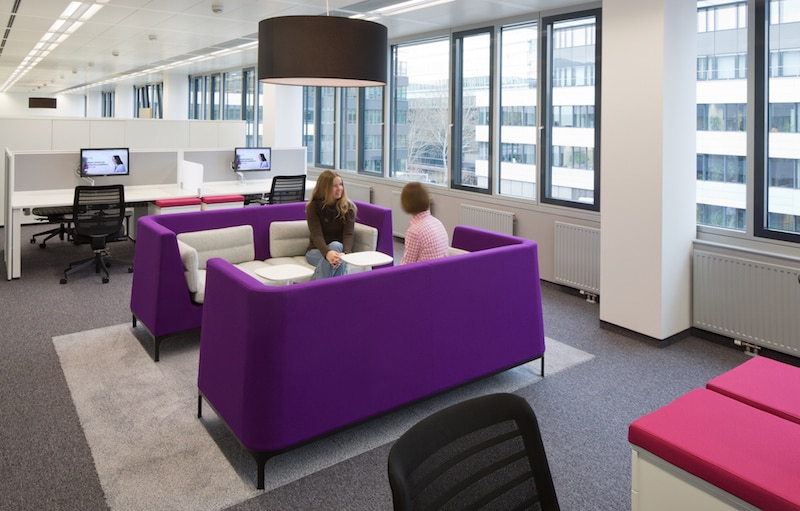
ITHACA, New York (WOMENSENEWS)—As I was giving a talk in Tokyo recently on global workplace trends, I noticed something shocking. In the audience of about 150 people representing the leaderships of architecture firms, real estate developers, builders and engineers, I saw hardly any women.
That matters.
My talk was about future workplaces that respond to mega trends of economy and society.
My premise: that the continuous advancement of technology and rise of telecommuting is changing the meaning of the business workplace. Less and less does it mean office buildings. More and more it will mean dining rooms, coffee shops, patios, park benches, gyms, train stations. Workplaces are now anywhere, permeating all types of urban spaces.
New ‘Mobile’ Workforce
For almost a century, workplace design created standardized services, homogenous offices or open cubicles for “typical” white-collar workers. Users come into the picture as a rather abstract concept. General and uniform needs—spatial, thermal, visual, acoustic—driven by codes and real estate norms often guide workplace planning and design.
This approach goes back to the office floors designed under the principles of “Taylorism” in the early 1900s, a time when offices were subjected to the same considerations as a production line, emphasizing order, efficiency and hierarchy.
Workplace management, now, however, is moving away from designing offices and cubicles that reflect workers’ status in the organization.
Networking and information technology is blurring the lines between the functional and symbolic meaning of space.
Increasingly, today’s retail sales clerks are freed from their former posts behind heavy cash registers. Now, they often walk around with lightweight mobile transaction devices and cross paths with shoppers, managers and buyers.
Work is more mobile and workplace activities are more interactive and dynamic when work is no longer anchored by heavy equipment.
Nonetheless, businesses have the same interest as ever in attracting talent and retaining their employees.
That combination—of an increasingly fluid work setting and employers’ continuing need to recruit and retain talented workers—pushes workplace designers to pay greater attention to the diversity of individual needs.
We’ve been reading about how companies such as Google and Facebook create inspiring and playful spaces to bring people together in ways that foster innovation. For younger people, the work environment is a factor when they choose a job.
Some new designs are catering to different types of work activities, e.g. heads-down work, discussion, meeting with remote participants and socialization.
Individualized Design
Designers must think, increasingly, about how to best support different work styles and individual needs to support organizations’ business goals.
If, for instance, a food company hires a young woman to spend most of her time traveling to supermarkets to to check on product displays, and seldom appear at a central office, what kind of design considerations does that require? What are her “space” needs for work?
The answer in this case, could be providing her with a GPS loaded with information of high-quality “touch down” spaces where she can comfortably sit, connect to Wi-Fi, have a table to place her laptop and notes, and with easy access to a public restroom for women.
Demographic change in the workforce is one of the mega trends this society is facing. As we observe growing diversity, design planning requires more attention to gender, age, life-style, ethnicity and culture.
Diversity has to be viewed as a more fundamental driver when creating the next generation work settings, as a manifestation of a true belief that the origin of the success of companies comes from engaged and empowered people who are diverse individuals.
And that’s why diversity in the leadership ranks of real estate companies, architecture and engineering firms, will be necessary for any businesses bent on success.


